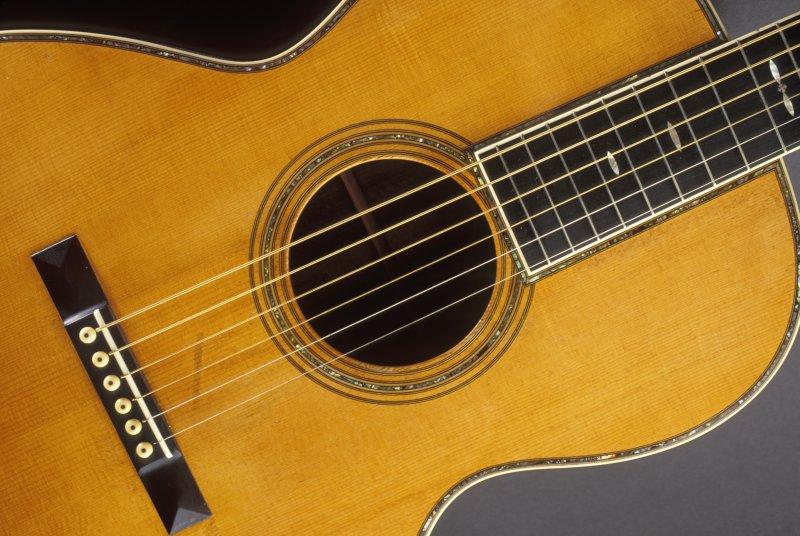Did you know tuning your guitar a different way can open up tons of new possibilities in your playing? Guitar teacher James W. shares three of the most popular alternate guitar tunings you’ll want to explore…
There are many alternate guitar tunings that can be used to create new sounds and styles on the guitar. In this blog post, we will discuss three alternate tunings that every guitarist should try.
Each of these tunings offers a unique sound and playing experience that is worth exploring.
So, if you’re looking for something new to add to your guitar playing repertoire, be sure to give these alternate tunings a try!
How Many Alternate Guitar Tunings Are There?
There are an endless number of possible guitar tunings. However, some tunings are more popular than others.
- Standard tuning – it consists of the notes E, A, D, G, B, and E, from lowest to highest.
- Drop D – the lowest string is tuned down to a D
- Open G – this is often used by slide guitarists
- Half-step down – this gives the guitar a heavier sound
There are also many unusual and experimental tunings that have been devised by creative guitarists over the years, which we’ll take a closer look at in this post. The possibilities are truly endless when it comes to alternative guitar tuning!
If you’re interested in learning more about guitar alternate tuning, you should sign up for guitar lessons. You’ll cover everything you need to know about alternate tunings for guitar as well as all the other basics of learning how to play this fun instrument, like what you see in the video below:
https://www.youtube.com/watch?v=kiE9H0OHnkA
What Are Alternate Tunings for Guitar?
Guitars are typically tuned to standard tuning, which includes the notes E, A, D, G, B, and E. However, there are many other ways to tune a guitar.
Alternate tuning guitar can be used to create different sounds or to make it easier to play certain chords or melodies. Some alternate tunings include drop D tuning, open G tuning, and DADGAD tuning. Each of these tunings has its own unique sound, and guitarists may use different tunings depending on the style of music they are playing. Experimenting with different tunings is a great way to explore the possibilities of the guitar and find the sound that best suits your style of playing.
It is estimated that singer-songwriter Joni Mitchell created over 58 open tunings for guitar in her quest to create new songs over the course of her 50 year career in popular song. She was able to be remarkably inventive in her playing simply by experimenting with the guitar’s tuning. Styles that use open tunings or alternate tunings include folk, blues, pop, rock, and even djent styles of music. Here are some basics…
1. You tune so that your open strings when strummed play a chord, and that chord is the key for your song.
2. Open tuning means you will need to learn new shapes or fingerings to play open chords. You can also play a chord by strumming all the open strings or barring just your index finger across all six strings.
How to Tune Your Guitar to Open Tunings
We are going to deal only with three of the most popular keys used for open tuning for now. Each tuning below is low to high on the strings. Use your electronic tuner and tune your guitar down to the chord for the key you want to play in today.
The advantage of knowing these tunings is that they open the door to more ideas, more fun, and more songs to play either with your fingers exploring new fingerings or using a slide to play slide guitar and take a solo during the song.
If playing lead guitar has been difficult for you up until now, cheer up because tuning your guitar to Open E, Open D, or Open G may be your passport to freedom. Open tunings create a full sound that is both pleasing to the ears when strummed on guitar, or when playing melodies with one or two fingers, and of course when jamming with other guitar players.
3 Alternate Guitar Tunings to Try
There are a variety of alternate guitar tunings that can offer a new sound and experience for any guitarist. Here are three alternate tunings that every guitarist should try!
1. Open E: E B E G# B E (tune down low to high)
Open E Secrets: Open E is one of the most popular tunings in American music. For instance, Derek Trucks of the Allman Brothers frequently tunes to Open E. He absolutely flies along at a nice tempo creating beautiful sounds for his audience. He has played with bands live all over the world. This includes legendary musicians like Doyle Bramhall and Eric Clapton and his spouse Susan Tedeschi in the Tedeschi Trucks Band. His influences came from Duane Allman and countless others like blues music legends Robert Johnson and Mike Bloomfield.
Today this tuning is used by John Mayer, Joe Bonamassa, and Sheryl Crowe. Bands like Train and Goo Goo Dolls use this tuning on acoustic guitar and electric guitar to make the melody and vocal really dance. It is definitely worth exploring.
2. Open D: D D F # A D (tune down low to high)
Open D Secrets: This is one of the most satisfying keys to play in, write a song in, and sing along with if you enjoy creating a pleasing harmony. Classic songs like “Suite: Judy Blue Eyes” by Crosby Stills Nash and Young use this tuning. In fact without Stephen Stills’ acoustic tuned down to Open D it would lack the support the song needs.
3. Open G: D G D G B D (tune down low to high)
Open G Secrets: This is a key most anyone can grab on to and sing a song in. With the exception of C Major, which is home, this may be the most comfortable of choices in western music, which makes it a must-know for guitar players all over the country. The droning quality and sweet tones make us feel good.
Also we notice the variation tuning G-G-D-G-B-D was used by Joni Mitchell for “Electricity”, and “For the Roses”, both Hit Songs for her. Altering this tuning slightly to G-D-G-B-D for his five-string guitar, Keith Richards of The Rolling Stones plays his songs “Start Me Up”, “Honky Tonk Women”, “Brown Sugar” with authority, conviction and a swagger the recalls the early blues master Muddy Waters, and Father of Rock and Roll, Chuck Berry. Keith made it clear that open tunings freed up his creative spark.
8 String Guitar Alternate Tunings
When it comes to creating unique and interesting sounds on the guitar, alternate tunings are a great place to start. By retuning the strings to different pitches, you open up a whole new range of possibilities for chords and melodies.
For 8 string guitars in particular, there are a number of interesting alternate tunings to explore.
One popular option is drop-tuning, which involves tuning the low E string down to a lower pitch.
This gives the guitar a heavier sound, perfect for metal and rock styles. Another popular 8 string tuning is double drop D, which drops both the low E and A strings down a step.
This creates a dark and atmospheric sound that is ideal for doom metal and other dark genres. Of course, these are just a few of the many possible tunings for 8 string guitars.
So if you’re looking to add some new colors to your sonic palette, be sure to experiment with alternate tunings.
What is the Weirdest Guitar Tuning?
For most guitarists, the standard tuning of E-A-D-G-B-E is the only way to go.
But for those looking to add a little bit of spice to their music, there are a wide variety of alternate guitar tunings to choose from.
Some of the more popular alternate tunings include dropped D (D-A-D-G-B-E), open G (D-G-D-G-B-D), and all fourths (E-A-D-G-C-F). But these are just the tip of the iceberg. With a bit of experimentation, almost any combination of notes can be used to create a unique sound.
So whether you’re looking to add a touch of originality to your music or just confuse your friends, alternate guitar tunings are definitely worth exploring.
Does Alternate Tunings Damage Guitar?
Many guitar players believe that using alternate tunings can damage their instrument, but this is not necessarily true.
While it is true that alternate tunings can put additional stress on the strings and the neck of the guitar, this does not necessarily mean that it will cause damage. If the guitar is properly adjusted and maintained, it should be able to handle the extra tension without any problems.
Additionally, many players find that alternate tunings can actually help to improve their playing by giving them access to new sounds and techniques. As long as the player is careful and does not overdo it, there is no reason why alternate tunings should damage their guitar.
Is There an Alternate Guitar Tuning App?
There are a lot of guitar tuning apps available on the market. However, many of them only support standard tuning. For those who play in alternate tunings, this can be a frustrating experience.
Luckily, there are a few apps that cater to those who need something non-standard.
The best of these is Guitar Tuning Plus, which supports over 100 different tunings. It’s user-friendly interface makes it easy to find the right tuning for your needs, and the built-in pitchpipe ensures that you’re starting from the correct note.
Whether you’re a beginner just starting to explore alternate tunings or an experienced player looking for a reliable tool, this is the perfect app for you.
Best Alternate Guitar Tunings Advice
Alternative guitar tuning can be a great way to add variety and new sounds to your music. By learning a few basic alternate tunings, you can open up a whole new world of possibilities for your guitar playing.
We’ve given you a few examples of popular alternate tunings here, but there are many more out there waiting to be explored. So what are you waiting for? Start experimenting with alternate tunings today and see what new sounds you can create!
Interested in learning more about alternate tunings and other ways to experiment on the guitar? A great guitar teacher can show you all the tricks and tips you need to make your guitar playing come alive!
 Post Author: James W.
Post Author: James W.James W. teaches guitar, singing, and acting lessons in Jacksonville, FL. He specializes in teaching pop, rock, and modern country styles. James has been teaching for 10 years and joined the TakeLessons in 2010. Learn more about James here!
Photo by the bridge
Jill Cole

